Bucatini pomodoro is bursting with bright flavors. The pasta is coated in a classic Italian sauce made with San Marzano tomatoes and fresh basil. It's perfect for a quick weeknight dinner or a special date night meal!
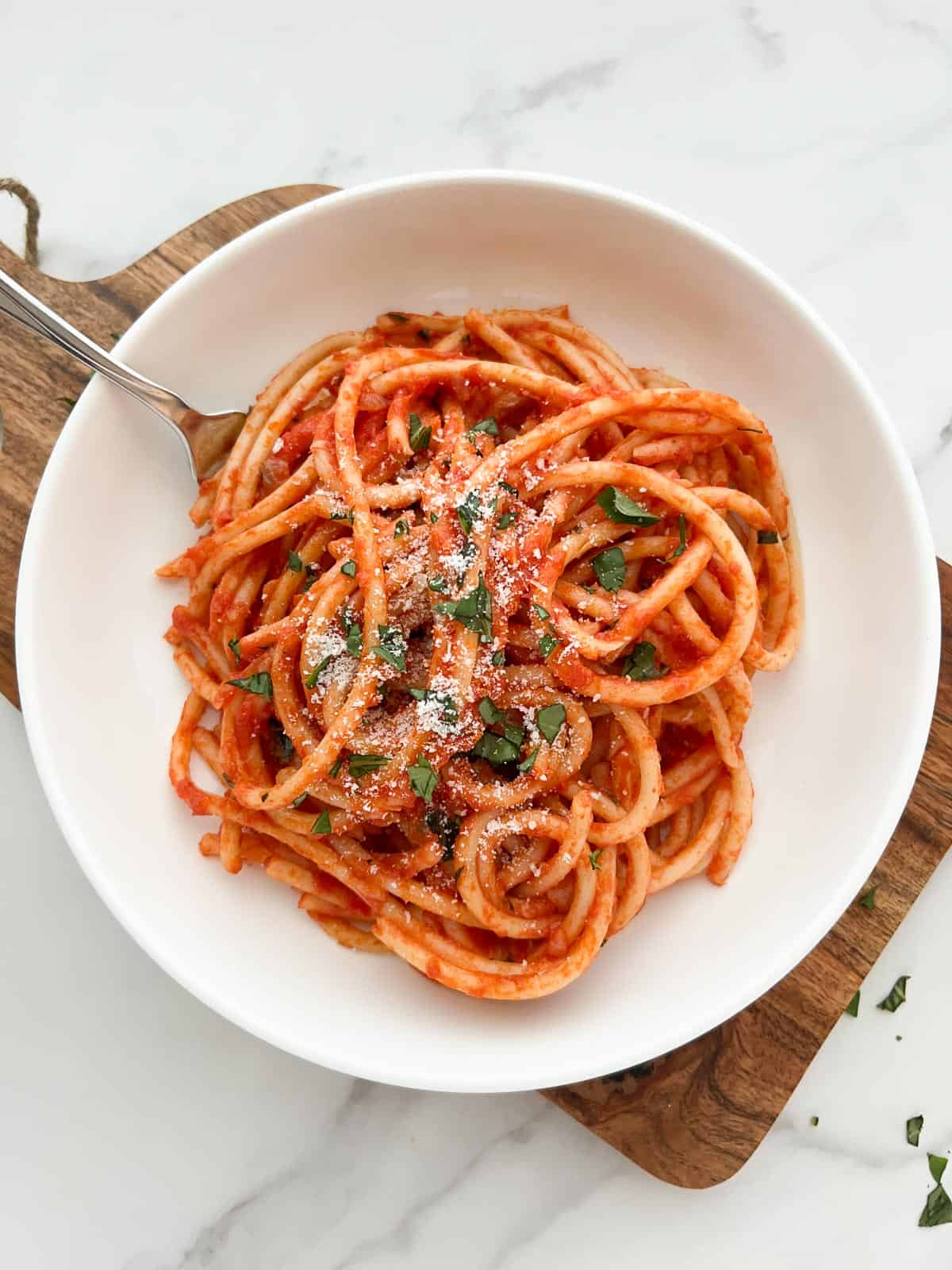
Save This Recipe! 💌
Coming from an Italian family, pasta with red sauce is everything. It's a quick weeknight meal, a cozy weekend dinner, and it even steals the show for celebratory feasts.
This recipe is pasta with red sauce at it's best. It's a traditional pomodoro that stays true to it's roots, with the sauce made from just tomatoes, onion, garlic, salt, and fresh basil. It's the perfect example of how you only need simple ingredients to make an Italian tomato sauce with rich flavors.
This bucatini pomodoro recipe will seriously go with anything. It's great as a main dish and I love to serve it alongside Ligurian focaccia and burrata caprese, which also have bright tomato flavors. On busy weeknights, I love to serve this pasta with air fryer chicken sausage. Pasta and sausage are a match made in heaven and it's the easiest dinner to throw together. And don't skip dessert -- this almond Italian cake and walnut biscotti are the perfect end to a pasta meal!
If you're looking for more delicious pasta recipes, check out my 6 cheese mac and cheese, rigatoni al forno, pasta al pesto, and rigatoni arrabbiata. You'll thank me later!
Jump to:
Ingredients
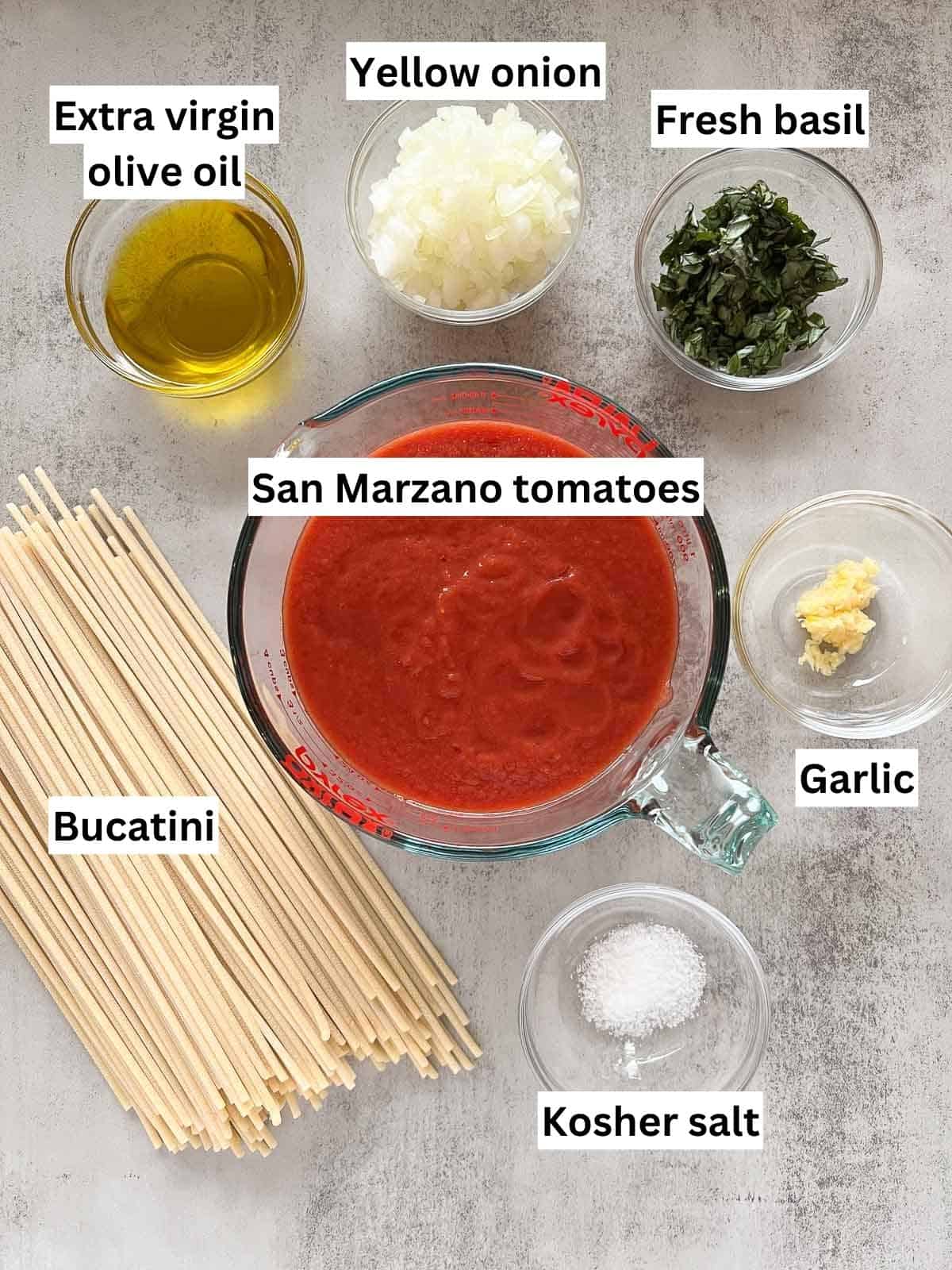
Ingredient Notes
- Bucatini is a long, thin pasta shape with a hollow center. It's ideal for a pomodoro because the hollow center grabs the sauce and packs each bite with amazing flavor. When choosing a dried pasta, I prefer those that have "durum semolina wheat" as the only ingredient. I personally believe this has the best flavor and the gluten in durum semolina allows the pasta to reach a perfect al dente texture.
- San Marzano tomatoes come whole and peeled in a can. The tomatoes need to be puréed before cooking, which can be done by pulsing them in a food processor or blender until a smooth consistency is achieved. You can also crush them with your hands and break them apart with a wooden spoon as they cook, although the sauce may not be as smooth this way. I prefer using the San Marzano variety because they are so sweet and flavorful. They are canned at the peak of ripeness and will give your sauce a depth of flavor and richness that can't be beat. To be sure you have authentic San Marzano tomatoes, check the label for the official Italian DOP symbol and the seal of the San Marzano consortium. I prefer to use products without additives, and look for tomatoes, basil, and tomato juice or puree as the only ingredients.
- Extra virgin olive oil will give the sauce the best flavor. Extra virgin is less processed than regular olive oil and a great source of antioxidants and healthy fats.
- Fresh basil complements the tomato and is more flavorful than using the dried version.
See recipe card for quantities.
Substitutions and Variations
- Use a different pasta: pomodoro sauce is great with long pasta shapes. You can substitute the bucatini with spaghetti, fettuccini, linguine, or capellini. But, really, any pasta shape will work so you can pick your favorite! You can also substitute with pasta made from whole wheat, lentils, or chickpea.
- Use a different tomato: if you don't have San Marzano tomatoes, you can instead use "San Marzano-style" tomatoes. They use the same or similar tomato seeds but are grown outside of the designated Campania region in Italy. You can also use regular canned tomatoes.
- Use dried herbs: if you don't have access to fresh basil and garlic, you can use the dried versions instead.
- Add spice: you can add some red pepper flakes for a hint of spice.
- Top with parmesan cheese: garnish the finished dish with grated parmesan cheese for a a pop of umami and a beautiful color contrast.
Instructions
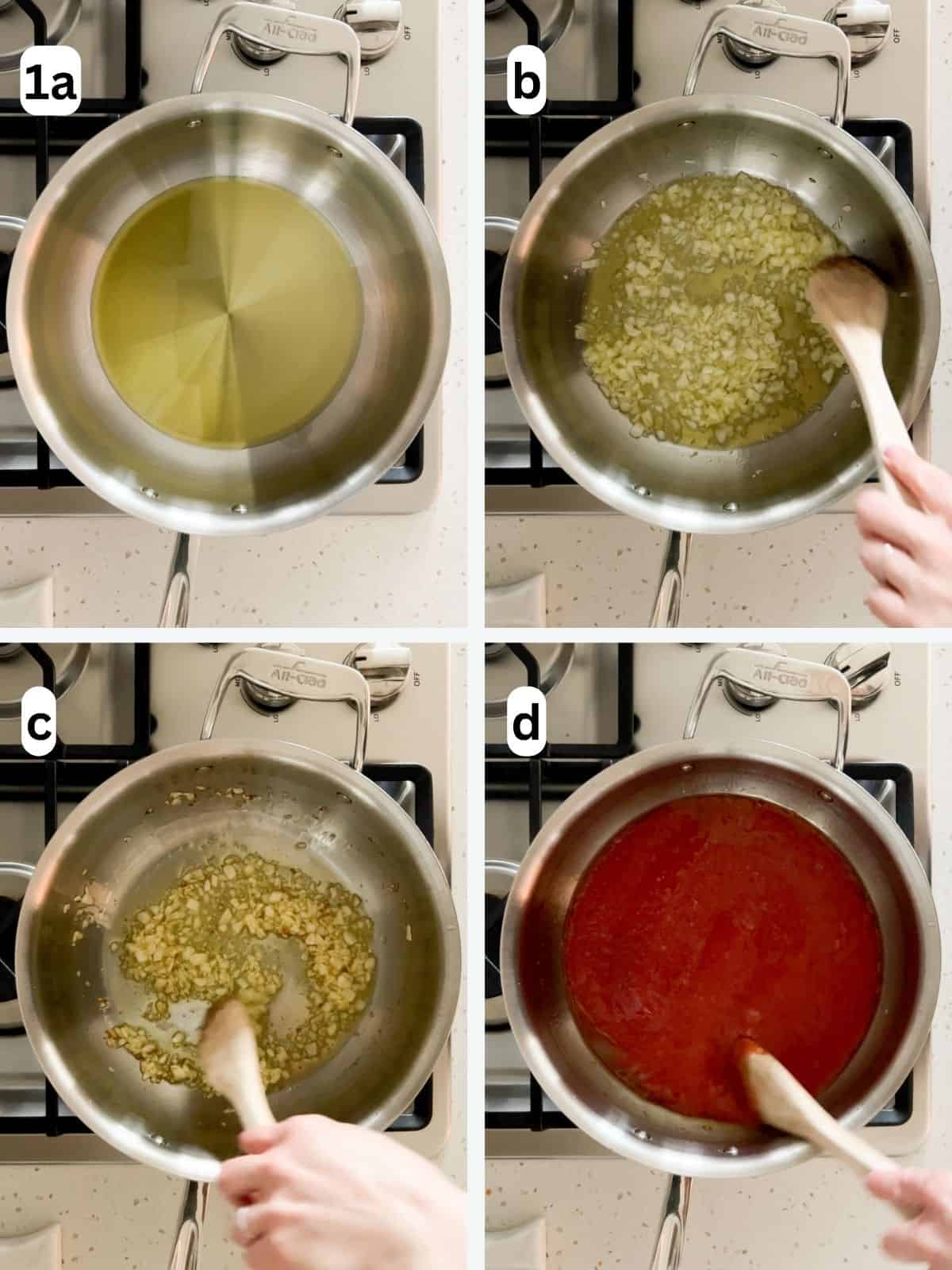
Step 1: heat the olive oil in a large sauté pan or skillet over medium heat. Add the onion and sauté until soft and translucent, about 3 to 4 minutes. Add the garlic and sauté 1 more minute until lightly golden. Then stir in the tomatoes and salt.
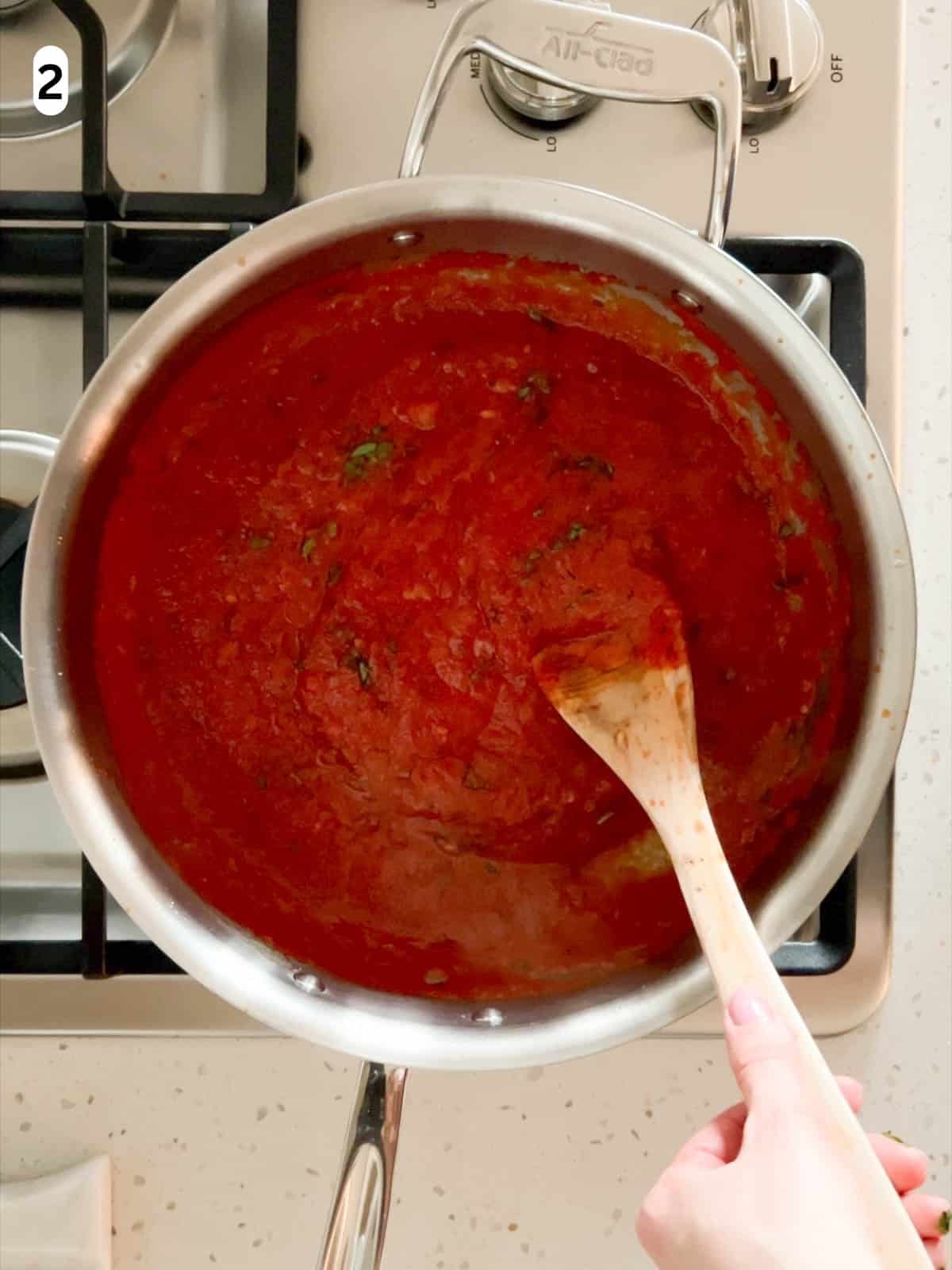
Step 2: simmer the sauce on low to medium heat for about 15 minutes until it thickens. Stir occasionally as it cooks. After it thickens, stir in the fresh basil.
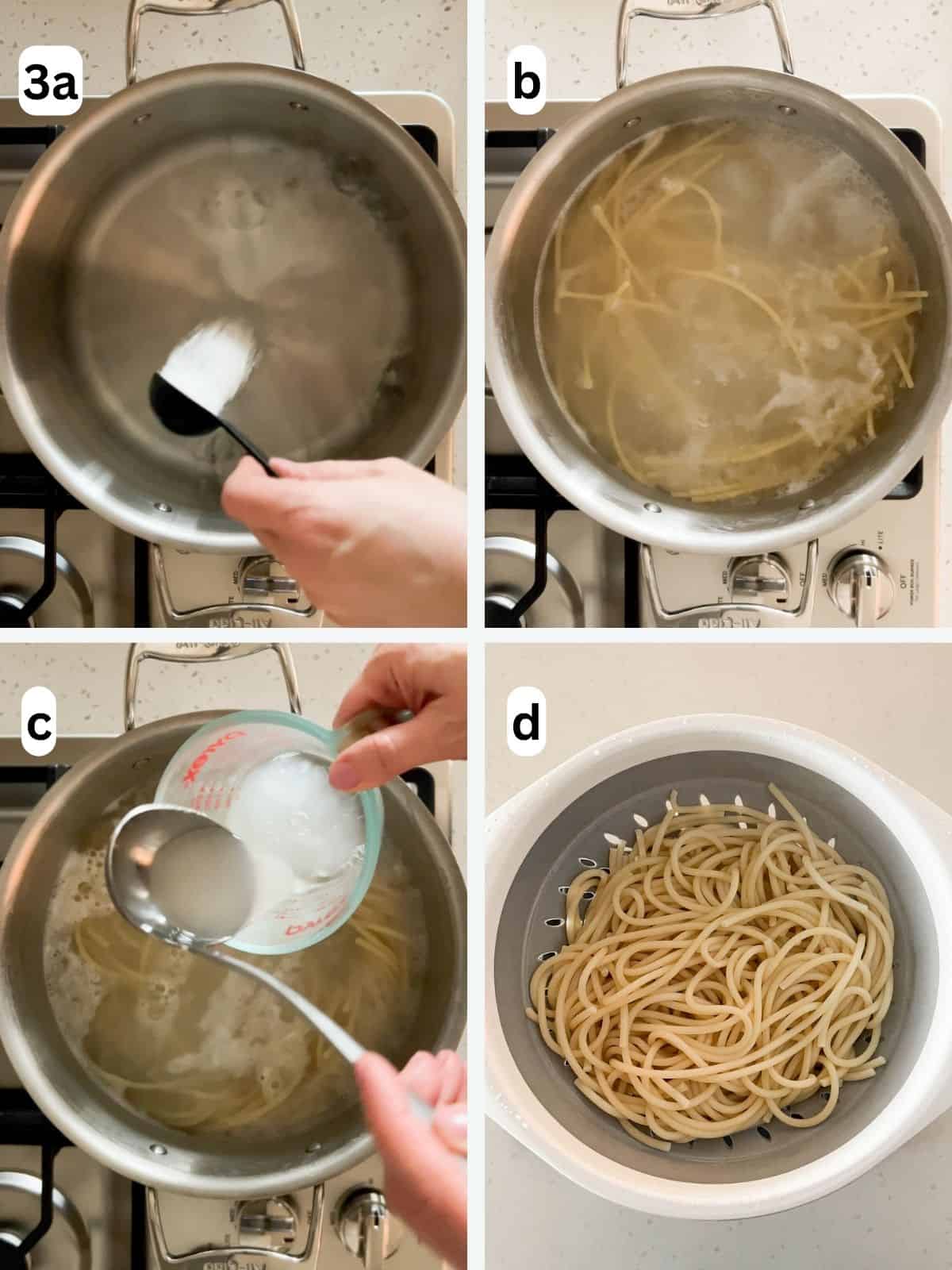
Step 3: as the sauce simmers, bring a large pot of water to a boil and add salt. Then add the bucatini and cook extra al dente, about one minute less than the package instructions. Just before the pasta is ready, reserve some pasta water and set aside. Then drain the pasta.
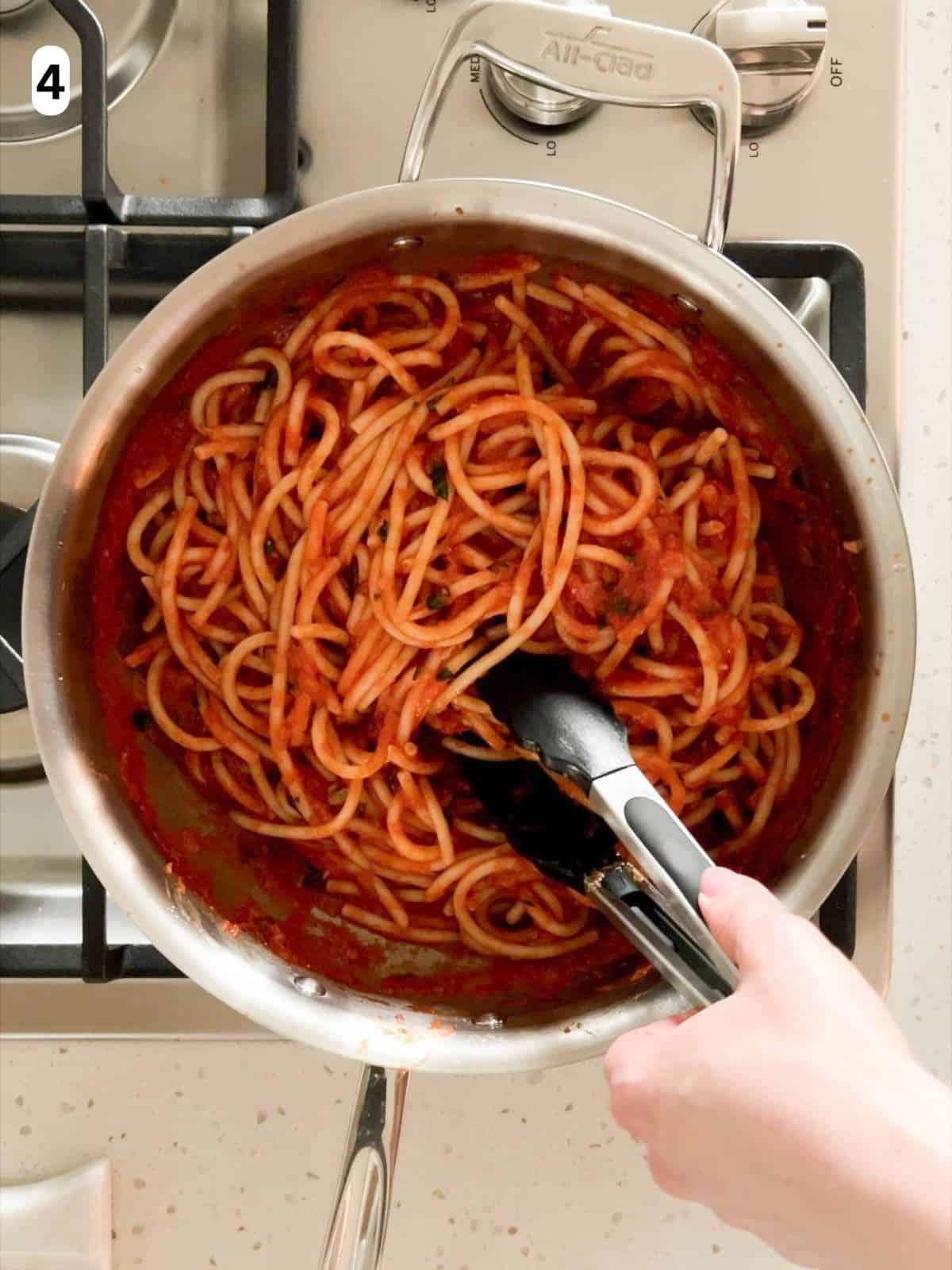
Step 4: add the drained pasta to the pan with the sauce. Mix together with tongs until the pasta is evenly coated. While mixing, slowly add the pasta water until your desired sauce consistency is achieved, saving any excess for leftovers. Remove from the heat and garnish with more fresh basil and grated parmesan if desired. Serve and enjoy!
Storage
The pasta can be stored in an airtight container in the refrigerator for up to 3 to 4 days. You can refrigerate some of the pasta water and drizzle a small amount over the leftovers before reheating. This will prevent the pasta from drying out.
The leftovers should be reheated to 165°F (74°C). I prefer to reheat the pasta in a skillet on medium-low until heated throughout. You can also reheat it in a microwave in 1 minute increments until it reaches temperature.
For more information about how to store food safely, check out this USDA Leftovers and Food Safety guide.
Expert tips
- Reserve 1 cup of the pasta water just before draining the bucatini. You can then pour a bit into the sauce when mixing it with the pasta. This allows you to achieve the desired consistency of the sauce without diluting the flavor. You can save any unused pasta water and drizzle it over leftovers before reheating to prevent it from drying out.
- Cook the pasta extra al dente, about 1 minute less than the package instructions. The pasta will cook a bit more when you add it to the pan with the warm sauce. By cooking the pasta a little less initially, you will have the perfect al dente texture in the finished dish.
FAQ
Although both pomodoro and marinara are tomato-based Italian sauces, they differ in their texture, taste, and ingredients. Pomodoro is made from crushed or puréed tomatoes, making it a smooth, thick, and uniform sauce. This consistency makes it ideal for saucing long, thin pasta shapes like bucatini. A classic pomodoro is made with a small amount of simple ingredients, usually tomatoes, olive oil, basil, garlic, salt, and onions. Marinara is made with larger tomatoes, making it a chunkier sauce that is an ideal base for meat or vegetable pasta dishes. It is usually made with more ingredients than a pomodoro, with thyme, oregano, and bay leaves being common additions.
There are some recipes where choosing bucatini instead of spaghetti is ideal. Although both pastas are long and easily coated with sauce, bucatini takes it a step further with a hollow center that fills with sauce. This allows bucatini to pack more flavor into each bite when paired with a thick, smooth sauce like a pomodoro. It all comes down to your personal preference, and this recipe will be delicious no matter which pasta shape you choose!
Related
Looking for other pasta recipes? Try these favorites:
Pairing
These are my favorite recipes to serve with bucatini pomodoro:
Did you make this recipe? I'd love to hear about it! Leave a star rating and comment below. Subscribe to my newsletter so you don't miss a new recipe!
Recipe
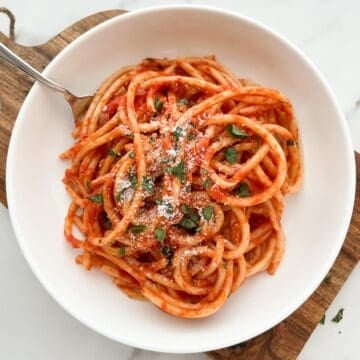
Bucatini Pomodoro
Save This Recipe! 💌
Ingredients
Pomodoro Sauce:
- ¼ cup extra virgin olive oil
- 1 small yellow onion (diced)
- 5 cloves garlic (minced)*
- 1 can (28 ounces) San Marzano tomatoes (puréed)*
- 1 teaspoon kosher salt
- ¼ cup fresh basil leaves (chopped, plus more for garnish)*
Pasta:
- 1½ tablespoons kosher salt
- 1 pound bucatini (dried)*
Instructions
- Make the pomodoro sauce: heat the olive oil in a large sauté pan or skillet over medium heat. Add the onion and sauté until soft and translucent, about 3 to 4 minutes. Add the garlic and sauté 1 more minute until lightly golden. Then stir in the tomatoes and the 1 teaspoon of salt.
- Thicken the sauce: simmer the sauce on low to medium heat for about 15 minutes until it thickens. Stir occasionally as it cooks. After it thickens, stir in the fresh basil.
- Cook the pasta: as the sauce simmers, bring a large pot of water to a boil and add 1½ tablespoon of salt. Then add the bucatini and cook extra al dente, about one minute less than the package instructions. Just before the pasta is ready, reserve 1 cup of pasta water and set aside. Then drain the pasta.
- Combine the pasta and sauce: add the drained pasta to the pan with the sauce. Mix together with tongs until the pasta is evenly coated. As you mix, slowly add the pasta water until your desired sauce consistency is achieved, saving any excess for leftovers. Remove from the heat and garnish with more fresh basil and grated parmesan if desired. Serve and enjoy!
Video
Notes
- Garlic: if you don't have fresh garlic you can substitute with garlic powder. Use ¼ teaspoon of garlic powder for each clove of garlic.
- San Marzano tomatoes: authentic San Marzano tomatoes come whole and peeled in the can. To purée them, you can pulse them in a food processor or blender until they reach a smooth consistency. You can also crush them with your hands and break them apart with a wooden spoon as they cook, although the sauce may not be as smooth this way. I prefer using San Marzano tomatoes because they have a rich, sweet flavor that is unmatched. An authentic can of tomatoes is grown in the Campania region of Italy and should have the official Italian DOP symbol and the seal of the San Marzano consortium on the label. If you don't have San Marzano tomatoes, the pomodoro will still be amazing. You can substitute with "San Marzano-style" (same or similar seed but grown outside the designated region) or regular canned tomatoes.
- Basil: you can substitute the fresh basil with dried, using ⅓ the amount. Instead of using ¼ cup of fresh basil, you would use 1 tablespoon plus 1 teaspoon of dried basil.
- Bucatini: you can substitute with the pasta shape of your choice. Other long cuts like spaghetti, fettuccini, or linguine would work well. You can also substitute with a whole wheat, lentil, or chickpea pasta. Cooking times may vary, so follow the package instructions for best results.
- Fresh pasta conversion: substitute 1½ pounds of fresh pasta for every 1 pound of dried. Adjust the cooking time accordingly. Go slow when adding the pasta water to the sauce because fresh pasta absorbs less water. This prevents the sauce from becoming too watery.
- Add crushed red pepper flakes: for a little spice, you can add ¼ teaspoon of red pepper flakes to the sauce. You can do so in step 1 when you add the salt.
- Garnish with grated parmesan: for a pop of umami you can add some grated parmesan cheese on top. The white is a beautiful contrast to the bright red sauce!
- Storage & reheating: store for up to 3 to 4 days in an airtight container in the refrigerator. Refrigerate any extra pasta water and drizzle a bit over the leftover pasta prior to reheating. Any leftovers should be reheated to 165°F (74°C). The pasta can be reheated in a skillet over low to medium heat until warm throughout. You can also reheat it in a microwave in 1 minute increments until it reaches temperature.
Nutrition
The provided nutrition and storage information is estimated. Accuracy is not guaranteed.
See our Disclaimer for more information.
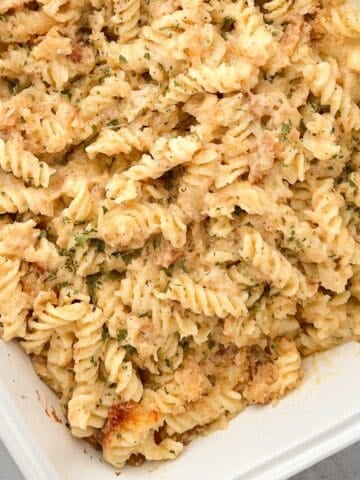

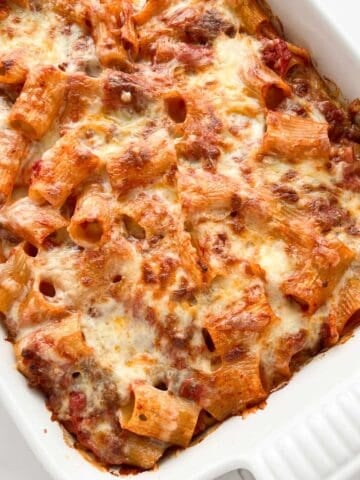
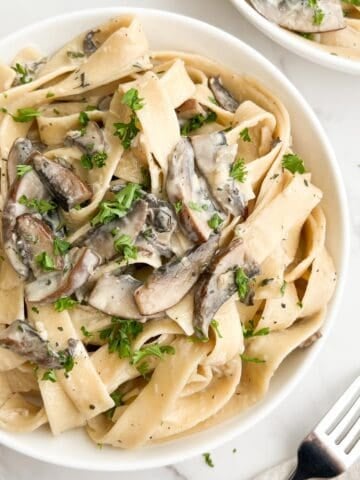




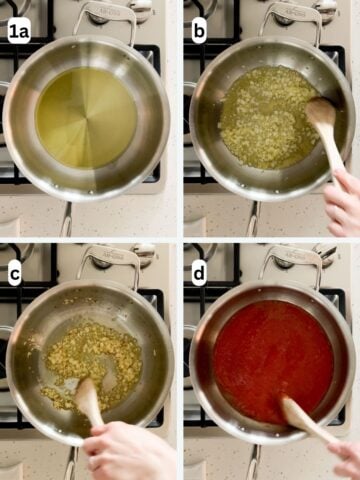
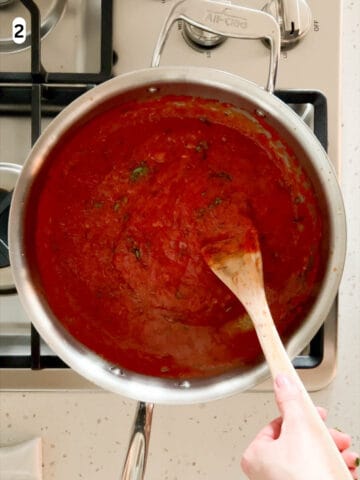


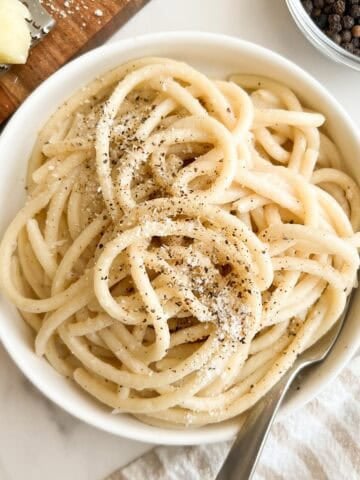


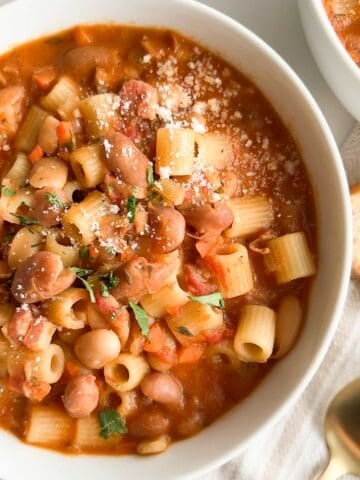
rd says
I am a pasta lover, through and through, and the tomato-based sauces are my favorites. This pomodoro recipe makes a delicate, delectable sauce that coats the pasta just right. The flavor is delicious, and is just as good the next day as leftovers. If you love Italian food you will love this easy-to-make recipe!
Maria D'Errico says
Thanks for leaving a review! I agree, the leftovers are so good!